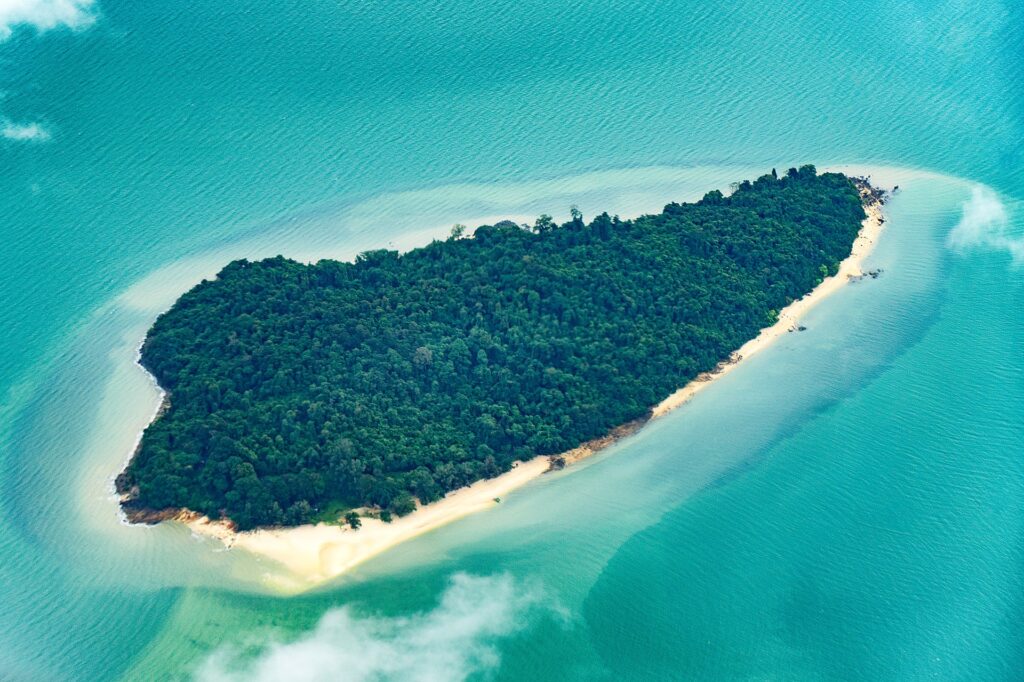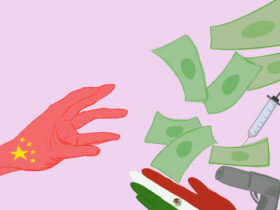LOS ANGELES — Small Island Developing States (SIDS) are sprinkled all around the world. From the Bahamas in the Caribbean and the Maldives in the Indian Ocean to Fiji in the Pacific and Cape Verde Off the African Coast, these sunny paradises have long been a home to indigenous populations, an oasis for tax havens, and an ever-growing destination for millions of tourists.
However, with the ongoing COVID-19 pandemic disrupting international travel and tourism, these remote countries have suffered greatly from the repercussions of a lack of tourism dollars being injected into their economies.
According to the Organization for Economic Cooperation and Development, the usual percentage of gross domestic product, or GDP, from tourism for developing countries is 5%; however, for SIDS, the average share stands at over 20%. This over-reliance on the tourism industry has proven to be a highly fragile aspect of the SIDS economy, as tourism numbers decreased drastically during the pandemic, and so did the revenue.
The Maldives is an illustrative example of this phenomenon. According to the World Bank, the tourism industry accounts for about 25% of the small Indian Ocean country’s GDP. Combining this factor with the steep decline in tourism due to the pandemic — from around 1.7 million visitors in 2019 to approximately 560,000 in 2020, or about a 66% decline — the country’s GDP contracted an estimated 28% by the end of 2020.
“As an economy heavily dependent on international tourism, the restrictions on global travel and other protective measures against the Covid-19 pandemic have had a significant impact on the Maldives,” President Ibrahim Mohamed Solih told CNBC in a March 2021 interview.
The Maldives had to close its borders to foreign tourists from March to July of last year. Not only did this trigger the firing of thousands of workers, as tourism revenue quickly declined , but it also directly affected the cash flow of foreign currency that helped the Maldivian Government pay for imports.
According to the Michigan State University, around 60% of the Maldives’ foreign exchange receipts are acquired through foreign tourism spending. These funds are used to buy imports such as petroleum, building materials and around 90% of the country’s food supplies.
According to a recent United Nations Development Program report on the Maldives’ state during the pandemic cited that these imports were drastically affected by the decline in tourism and foreign money being exchanged and used in the country. The same report highlights how the country went from importing around $45 million worth of petroleum in January 2020 to only about less than $10 million by May of the same year.
This drastic fall in imports, economic activity, employment and overall quality of life in the Maldives highlights how fragile the tourism industry can be if a country is overly reliant on it. As the industry depends on several foreign factors that SIDS, like the Maldives, have virtually no control over, they have found this pandemic to be a “wake up” call to start looking into economic and industry diversification efforts.
In the Maldives, this led the government to develop diversification plans for investing more in education and youth programs, as well as investment in foreign markets and better worker preparation for Maldivian citizens to incorporate them into the workforce outside of tourism.
Luckily for the Maldives, its government has managed to keep a steady path towards recovery. The Maldivian authorities managed to cut down on their government spending and swap their monetary arrangements with foreign government banks like the Reserve Bank of India for a value of $400 million. Although tourist numbers are still below average – with around 200,000 foreign visitors arriving at the small nation between January and February 2021, which only accounts for 42% of last year’s numbers during the same period – the country expects to have about 1,000,000 tourist arrivals in 2021, which would lead to an approximate 17% rise in GDP by the end of the year.
Nonetheless, this ideal scenario that the Maldives has managed to achieve is not the de facto outcome for every SIDS county. Other small island nations around the world have not been as fortunate to have a big enough monetary reserve and quick tourism recovery, such as the Maldives.
This is the case of Fiji. This Pacific island country depends heavily on the tourism industry, accounting for 40% of its GDP and being directly responsible for employing 150,000 people, or 17% of the population of 880 thousand people.
According to the Reserve Bank of Fiji, the country’s GDP shrunk by about 21.7% by the end of 2020, highlighting the worst contraction in the nation’s history. This is mostly because the number of tourists who visited the country in 2020 was 75% lower than in 2019. Fijian Prime Minister Frank Bainimarama said that this also led to 115,000 Fijians, or one-third of the Fijian workforce to be laid off from jobs or have hour cuts due to the failing tourism industry.
“You can’t suddenly work from home when you earn your paycheck as a scuba instructor, or as a handicraft maker who usually sells to tourists,” said Bainimarama in a press conference in July 2020. “With borders shut around the world, Fijian tourism has come to a halt. Many jobs have still not returned; some may never.”
However, he has a different approach regarding future recovery for his country’s economy. Based on a survey and report by the IFC, diversification might still be in the picture, with efforts to improve education and workforce training programs in sight. However, plans like these are yet to be made official. Ultimately, Bainimarama still sees the tourism industry as Fiji’s main, and arguably, only choice for total recovery.
“When it comes to COVID, SIDS need resources, not regulations better suited to larger level markets,” Bainimarama said. “Let’s find opportunity in this crisis, by recognizing how the international community can better support employers and employees who rely on the stewards of small island economies, like tourism, and target support accordingly.”
His primary approach is to increase resources for the country’s development and its tourism industry, rather than veer towards more globalized forms of growth such as the Maldives plans to do with foreign investments. With this current strategy, the Reserve Bank of Fiji estimates that the Fijian economy might return to pre-pandemic levels until 2023 with a GDP increase of around 14% in 2021, as long as tourism starts to increase steadily to 2019 levels.
The IFC survey report also highlights that regardless of some financial intervention from the Fijian government, around 74% of businesses surveyed expected to close within five months. This emphasizes how the government’s strategy, although reliable in the long term, has not provided much relief to the Fijian people. Moreover, the report also shows that if no diversification efforts are promptly implemented, the Fijian economy will remain vulnerable to other external factors such as climate change or other financial crashes.
Overall, these two countries pose two fairly different approaches towards economic recovery. While the Maldives has taken a more immediate diversification approach, Fiji — although potentially aiming to diversify, bets more on revitalizing- its tourism sector to regain economic normality.
In this comparative analysis, it is important to highlight that although Fiji has 360,000 more people than the Maldives, both countries have comparable GDPs of around $5.5 billion each. This gives the Maldives the comparative advantage in GDP per capita, having around $10,600 per person, while Fiji has $6,200.
This GDP to population ratio is one of the factors that has allowed the Maldives to have a smoother path to recovery, aided by the fact that they have taken more active monetary and fiscal policies to stabilize the economy.
However, the long-term recovery effects are yet to be seen entering the second quarter and the summer. This will be one of the main challenges for all the SIDS worldwide as they scramble to return to their pre-pandemic tourism levels.
Although a major part of the success of each country’s recovery will ultimately depend on the state of Covid restrictions within it as well as within its main tourism providing countries, the influence of fiscal and monetary policy as well as leadership in creating a sustainable strategy for recovery cannot be ignored.
Tourism is a very fragile industry, and through these two examples, it is clear that there can be different approaches to addressing its fragility. With very different kinds of SIDS around the world, from the very rich like Singapore to the small and humble like Tuvalu, each country will have to develop their own personalized approach to recovery.
Nonetheless, the fact that diversification is one of the main goals for SIDS still remains, as they look to make their economy more resilient to possible threats such as global warming and tourism crashes like the one that the pandemic originated.






